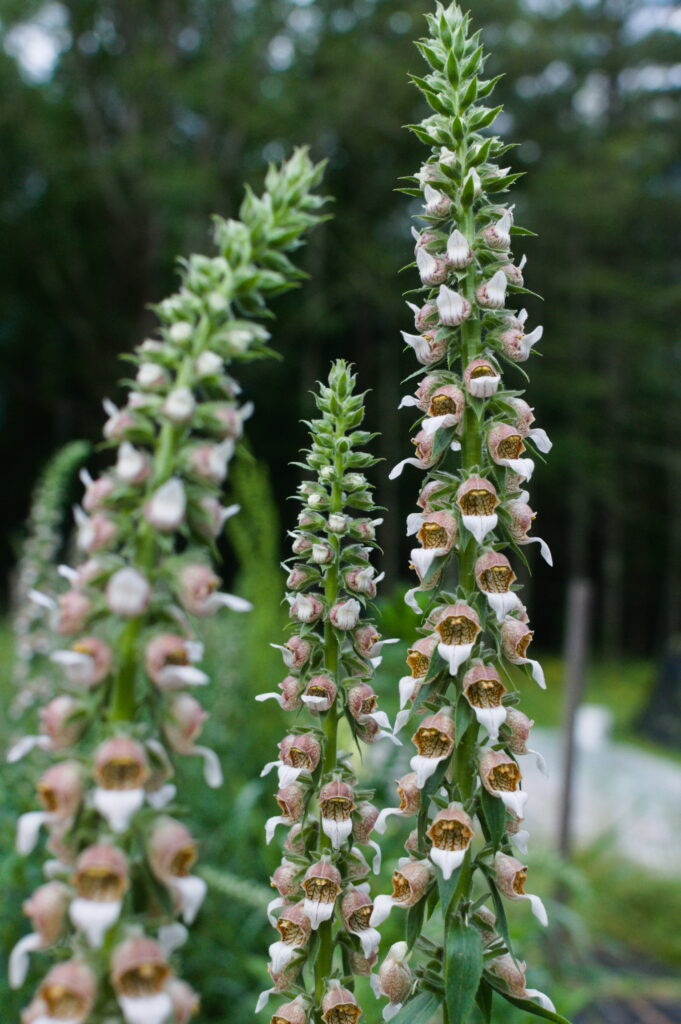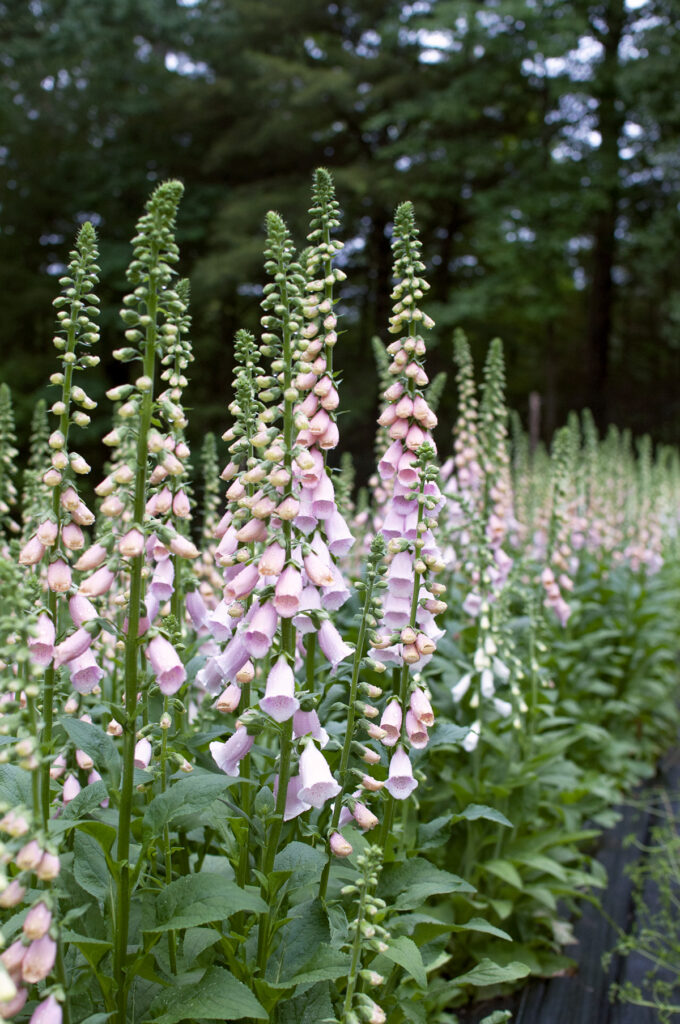Foxgloves are stealing my heart at the farm, so it’s only fitting they should have a post all to themselves.
Tall, dramatic, and smothered in little bell-shaped florets, this year’s foxgloves are just glorious.

This year we’ve been really successful at growing foxgloves. It’s always so satisfying to feel like you’re finally getting it right!
Our wondrous foxglove crop this year started with selecting which varieties to grow.
Foxgloves come in three flavors: annual, biennial, and perennial. They are the only flower that we grow for which this is true.


Annual foxgloves flower their first year, so we can start seeds in late winter and expect a midsummer crop.
We’ve grown annual foxgloves other seasons, and they are quite lovely! The annual foxgloves are smaller, though, and don’t always produce many flowers.
Here at Sea Change Farm, our crops have to earn their field space! And the jury is still out on whether annual foxgloves are “worth it” for us to grow.
Now biennial foxgloves, that’s where it’s at!!


This year’s glorious crop of extra-tall, extra-juicy foxgloves are biennials, meaning they flower in their second year. We’ll start seeds this week for next year’s foxgloves.
Two whole years to get these flowers!!! All right, if we’re being technical, it’s more like 365 days. But seriously, one could produce a human child in that amount of time.
I think these biennial foxgloves are totally worth the wait.

Biennial foxgloves are challenging to grow, because you must get them to survive the winter. Last year 90% of our biennial foxgloves died in the cold. Very sad.
I think the key to overwintering foxgloves is to give them plenty of time in their first summer to settle in, by starting their seeds nice and early (around now).
We also grew our biennial foxgloves in black landscape fabric this season. I’m sure the fabric offered a lot of winter protection and a few degrees of extra warmth. Almost all of them survived!
The last group of foxgloves are perennials, and they overlap with the biennial group.
Many biennial foxgloves could survive multiple winters and perennialize, in theory. My understanding is that they are most predictable when grown as a biennial, though.


I love arranging with foxgloves because they make a big impact with their towering stems. They are wonderful to use in large arrangements and installations.
I’ll be using foxgloves this weekend at a rainbow-themed mountain wedding. And next weekend at a whimsical woodland wedding, too. If they’re still around in 3 weeks’ time, I’ll definitely use our white foxgloves in a classic all-white wedding as well. I can’t get enough of these blooms!
At home, it’s lovely to put a few tall stems of foxglove in a vase on their own, for a simple but striking and architectural arrangement.

Foxgloves have me completely under their spell! How about you?
This is an excerpt from the Sea Change Farm & Flower email newsletter–sign up here.
